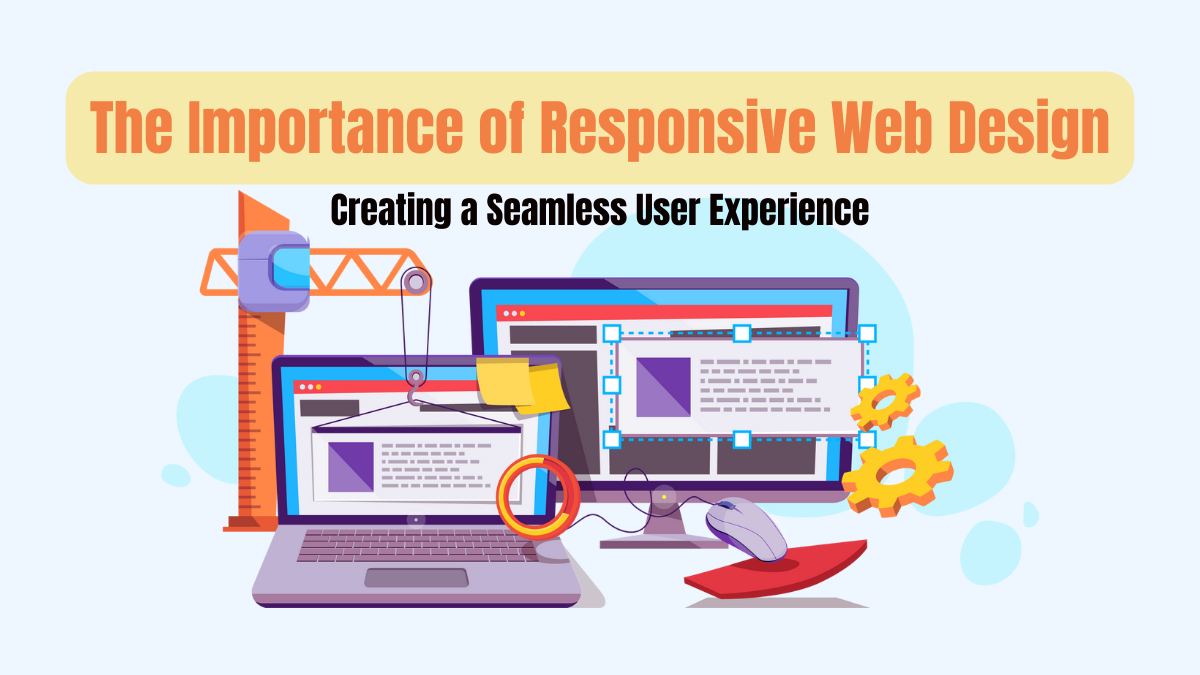Responsive Web Design: Ensuring a Seamless User Experience
Introduction
Responsive web design has become an essential aspect of modern web development. With the increasing use of mobile devices and varying screen sizes, it is crucial for websites to adapt and provide a seamless user experience across all platforms. In this blog post, we will explore the concept of responsive web design and its significance in today’s digital landscape.
What is Responsive Web Design?
Responsive web design is an approach to web design and development that aims to create websites that provide an optimal viewing experience across a wide range of devices and screen sizes. It involves designing and coding a website in a way that allows it to adapt and respond to the user’s device, whether it’s a desktop computer, laptop, tablet, or smartphone.
The Importance of Responsive Web Design
In today’s digital age, where mobile devices have become an integral part of our lives, having a responsive website is crucial. Here are some reasons why responsive web design is essential:
1. Improved User Experience
A responsive website ensures that users can easily navigate and interact with your site, regardless of the device they are using. It eliminates the need for zooming, scrolling, or resizing, providing a seamless and enjoyable user experience.
2. Increased Mobile Traffic
With the rise of smartphones and tablets, more and more people are accessing the internet on their mobile devices. By having a responsive website, you can cater to this growing mobile audience and attract more traffic to your site.
3. Better SEO Performance
Search engines like Google prioritize responsive websites in their search results. A responsive design ensures that your website is mobile-friendly, which is a crucial factor in search engine optimization (SEO). By improving your SEO performance, you can increase your visibility and drive more organic traffic to your site.
4. Cost and Time Efficiency
Instead of creating separate websites for different devices, responsive web design allows you to have a single website that adapts to all screen sizes. This saves you time and money on development, maintenance, and content management.
Key Principles of Responsive Web Design
Creating a responsive website involves following certain principles and best practices. Here are some key principles of responsive web design:
1. Fluid Grids
Using fluid grids allows your website’s layout to adjust proportionally to different screen sizes. This ensures that your content remains readable and visually appealing across devices.
Summary
Responsive web design is an approach that aims to create websites that can adapt and respond to different screen sizes and devices. It involves designing and developing websites in a way that ensures optimal viewing and interaction experiences for users, regardless of the device they are using.
By implementing responsive web design techniques, websites can automatically adjust their layout, content, and functionality to fit various screen sizes, such as desktops, laptops, tablets, and smartphones. This eliminates the need for separate mobile versions of websites and provides a consistent user experience across all devices.
Responsive web design not only enhances user experience but also offers several other benefits. It improves search engine optimization (SEO) by providing a single URL for all devices, making it easier for search engines to crawl and index the website. It also saves time and resources for website owners and developers, as they only need to maintain and update one version of the website instead of multiple versions for different devices.

In conclusion, responsive web design is crucial for ensuring a seamless user experience in today’s mobile-driven world. It allows websites to adapt and provide optimal viewing experiences across various devices, improving user satisfaction and engagement. B explanation y embracing responsive web design principles, businesses can stay ahead in the digital landscape and cater to the needs of their diverse audience.
- Q: What is responsive web design?
- A: Responsive web design is an approach to web design that aims to create websites that provide an optimal viewing experience across different devices and screen sizes.
- Q: Why is responsive web design important?
- A: Responsive web design is important because it ensures that users can easily access and navigate a website regardless of the device they are using, leading to a seamless user experience.
- Q: How does responsive web design work?
- A: Responsive web design uses CSS media queries to detect the screen size of a device and adjust the layout and design of the website accordingly.
- Q: What are the benefits of responsive web design?
- A: Some benefits of responsive web design include improved user experience, increased mobile traffic, better search engine rankings, and easier website maintenance.
- Q: How can I test if a website is responsive?
- A: You can test if a website is responsive by resizing your browser window or by using online tools like Google’s Mobile-Friendly Test.
- Q: Can any website be made responsive?
- A: In most cases, any website can be made responsive. However, the complexity and time required for the process may vary depending on the existing design and structure of the website.
- Q: Is responsive web design only for mobile devices?
- A: No, responsive web design is not limited to mobile devices. It aims to provide an optimal experience across a wide range of devices, including desktop computers, tablets, and smartphones.

Hello, I’m Luca Cornwall, a passionate and experienced Graphic Designer specializing in various aspects of design, including banner and poster design, web design principles, typography insights, and color theory. With a keen eye for detail and a strong creative vision, I strive to create visually stunning and impactful designs that effectively communicate messages and captivate audiences.
